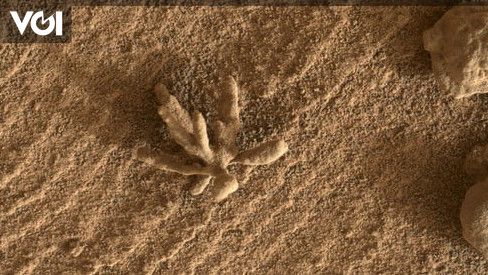JAKARTA – Planet Mars is currently known as one of the planets that holds a million mysteries. This planet is also claimed to have a past like Earth. No doubt a variety of unique objects are often found such as stones that resemble flowers.
NASA’s Curiosity rover robot which is now on the Red Planet has just discovered an interesting rock formation in the form of a flower.
This small object was captured by the camera Mars Hand Lens Imager (MAHLI) belonging to Curiosity who was at the end of its robotic arm.
“Stop and there’s a tiny flower on Mars. On February 24, 2022, our @MarsCuriosity rover captured an image of this flower-like rock. Less than a penny, this and a series of other finds are giving scientists insight into the Red Planet’s ancient past,” NASA said. via his official Twitter.
Embed:
Curiosity discovered the object on the 3396th Martian day of its exploration mission on the planet, while exploring an area of Mars called Pediment Greenheugh.
At that time, the robot explorer was investigating sedimentary rocks in the area and using the MAHLI camera to see textures in the rocks as well as the Mastcam and ChemCam instruments, which will learn more about the composition of these rocks.
Launch Digital Trends, Monday, March 14, in addition to photographing the striking rock shapes, Curiosity also aggregated the images to form four mosaic images that will cover some of the more distant rock and sand deposits.
The flower -shaped rock, according to NASA, is not formed from any organic process, but is made by mineral deposits carried in the water.
Mars is now a dry planet with almost no water or liquid on its surface. But millions of years ago it was claimed there was abundant water there that flowed into the river and created the formations that are still there today.
Explained by NASA, the flower alias flower -shaped stone along with the round stone artifact seen to the right of the image, was made in the past when minerals carried by water cemented the stone.
“Curiosity in the past has uncovered a wide variety of similar small features that form when mineralized fluid travels through channels in rock. This image of the feature helps scientists understand more about the long history of liquid water in Gale Crater,” NASA said.
–


/data/photo/2022/01/20/61e8f15d3c839.jpg)